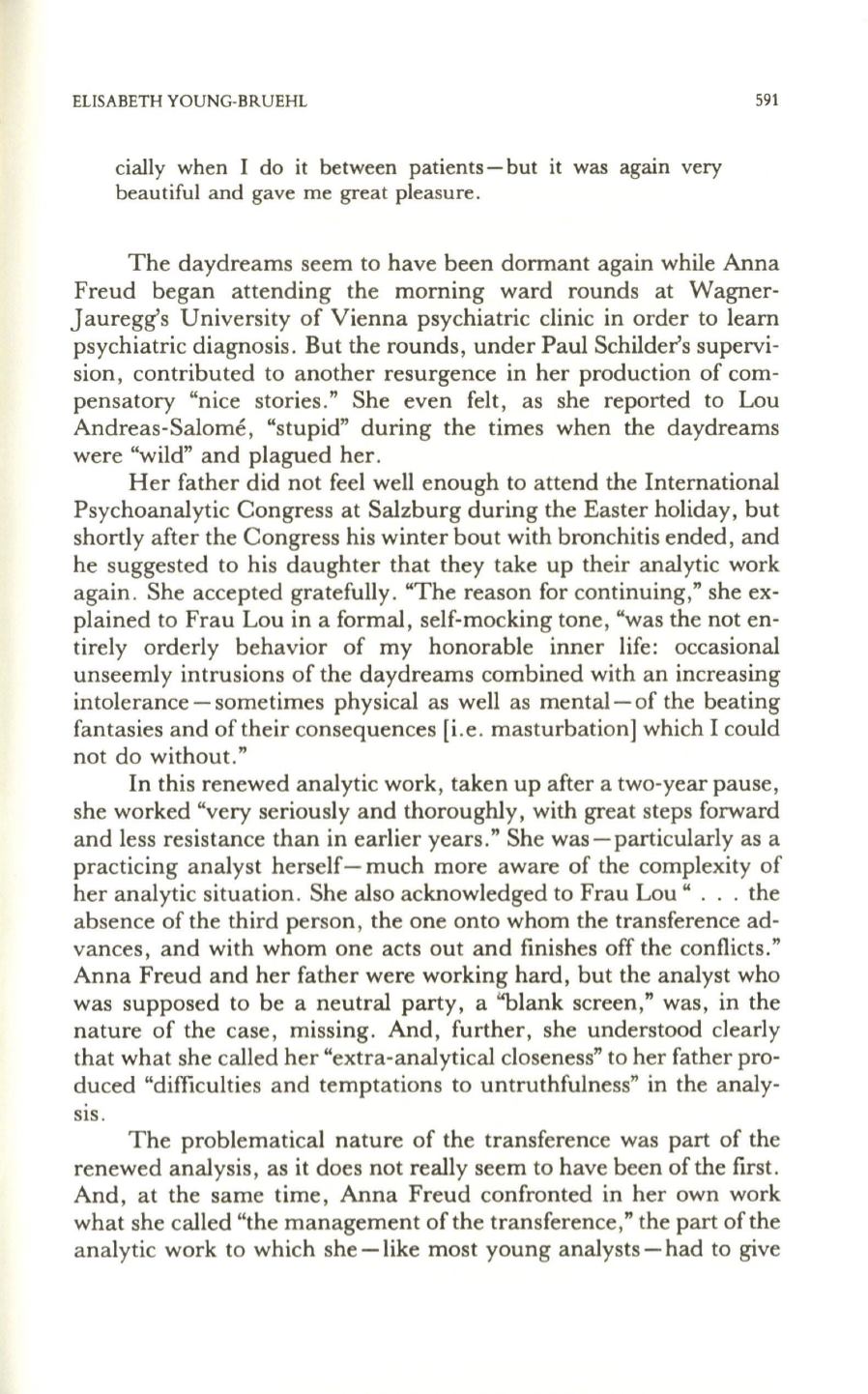
ELISABETH YOUNG-BRUEHL
cially when I do it between patients - but it was agam very
beautiful and gave me great pleasure .
591
The daydreams seem to have been dormant again while Anna
Freud began attending the morning ward rounds at Wagner–
Jauregg's University of Vienna psychiatric clinic in order to learn
psychiatric diagnosis . But the rounds, under Paul Schilder's supervi–
sion , contributed to another resurgence in her production of com–
pensatory "nice stories." She even felt, as she reported to Lou
Andreas-Salome, "stupid" during the times when the daydreams
were "wild" and plagued her.
Her father did not feel well enough to attend the International
Psychoanalytic Congress at Salzburg during the Easter holiday, but
shortly after the Congress his winter bout with bronchitis ended, and
he suggested to his daughter that they take up their analytic work
again . She accepted gratefully. "The reason for continuing," she ex–
plained to Frau Lou in a formal, self-mocking tone , "was the not en–
tirely orderly behavior of my honorable inner life: occasional
unseemly intrusions of the daydreams combined with an increasing
intolerance-sometimes physical as well as mental-of the beating
fantasies and of their consequences [i .e . masturbation] which I could
not do without."
In this renewed analytic work, taken up after a two-year pause ,
she worked "very seriously and thoroughly, with great steps forward
and less resistance than in earlier years ." She was-particularly as a
practicing analyst herself-much more aware of the complexity of
her analytic situation. She also acknowledged to Frau Lou" . . . the
absence of the third person, the one onto whom the transference ad–
vances, and with whom one acts out and finishes off the conflicts."
Anna Freud and her father were working hard, but the analyst who
was supposed to be a neutral party, a "blank screen," was, in the
nature of the case, missing. And, further, she understood clearly
that what she called her "extra-analytical closeness" to her father pro–
duced "difficulties and temptations to untruthfulness" in the analy–
SIS .
The problematical nature of the transference was part of the
renewed analysis, as it does not really seem to have been of the first.
And, at the same time , Anna Freud confronted in her own work
what she called "the management of the transference," the part of the
analytic work to which she -like most young analysts - had to give


